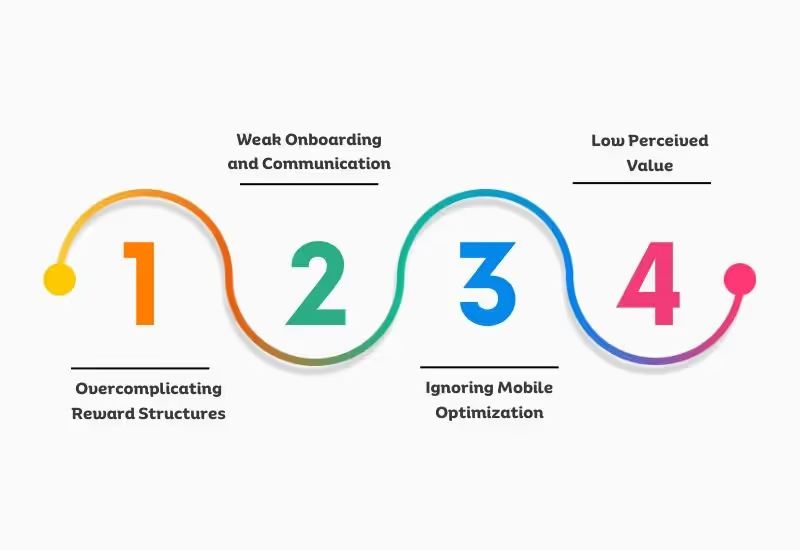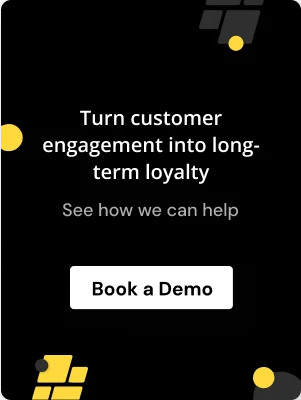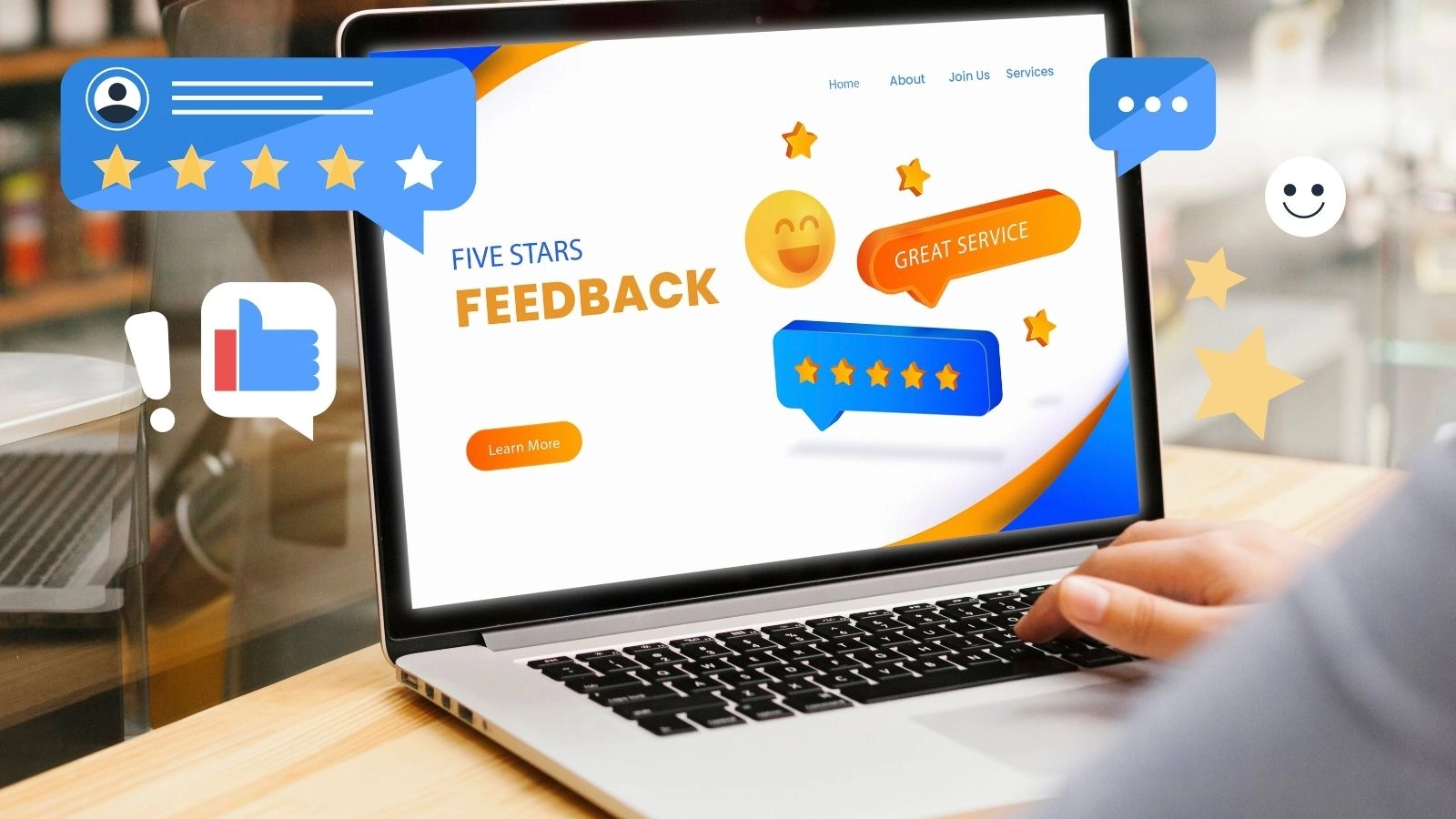.avif)
.avif)
Customer incentive programs are now a key part of how modern businesses drive loyalty and long-term growth. A strong rewards program can turn casual buyers into repeat customers, and research shows that 76% of customers are more likely to return to a company with a great customer reward program.
This growing focus on retention is reflected in the numbers: 53% of marketing budgets are now devoted to existing customers. This shift highlights how important it is for businesses to engage customers beyond the initial purchase. Incentives go beyond transactional exchanges; they create deeper connections, offering personalized rewards that keep customers coming back.
In this blog, we’ll explore everything you must know about incentive programs to help with not only boosting engagement but also cultivating long-term loyalty for your brand.
Key Takeaways:
- Incentive programs build long-term loyalty by rewarding actions like repeat purchases and referrals.
- Unlike discounts, incentives create lasting relationships with personalized rewards that encourage engagement.
- Gamification through points, tiers, and badges motivates customers by providing a sense of progress.
- Loyalty programs, free gifts, exclusive access, and referrals all strengthen customer connections.
- Ongoing innovation and feedback help keep incentive programs fresh and relevant for sustained engagement.
What Are Customer Incentives?
Customer incentives are rewards designed to motivate specific actions that benefit your business, such as repeat purchases, referrals, or reviews. By providing tangible value, incentives create stronger, longer-lasting relationships with customers, encouraging them to engage more consistently with your brand.
However, they are different from discounts. Discounts can push immediate sales and are effective for short-term sales. However, they can't build long-term loyalty.
Meanwhile, incentives go beyond price reductions by rewarding ongoing customer engagement. They encourage customers to take actions that increase their lifetime value, helping you secure not just a one-off sale, but a long-term customer.
Also Read: How to Ask for Customer Reviews: Best Practices & Examples
What Is the Psychology Behind Incentives?
Incentives tap into basic human psychology by offering rewards that trigger a sense of achievement and satisfaction. When customers are rewarded for actions like making a purchase or referring others, it reinforces those behaviors and encourages them to repeat them. This creates a cycle of ongoing engagement.
The effect can be further amplified with gamification; the use of game-like elements that enhance the experience and increase engagement. Here’s how it works:
- Gamification: Introduces points, tiers, and badges, making the process feel interactive and rewarding.
- Progress and Achievement: Customers feel motivated by tracking their progress and the sense of accomplishment as they get closer to unlocking rewards.
- Increased Engagement: Visual elements like progress bars and badges keep customers invested, encouraging them to continue engaging with your brand over time.
When done right, these psychological cues translate into tangible business results, which is where the real value of incentive programs comes in.
What Are Some Benefits of Offering Incentives?
Incentive programs provide numerous benefits for both businesses and customers. When designed effectively, they can strengthen relationships, boost sales, and create customer loyalty.
1. Encouraging Repeat Purchases and Customer Loyalty
Incentive programs are built for customers to make repeat purchases by offering rewards for their continued engagement. Loyalty programs, for example, build long-term relationships, making customers feel valued.
2. Make Every Interaction More Rewarding
Incentives add genuine value to the customer experience by making every touchpoint with your brand feel more worthwhile. Perks like discounts, free gifts, or early access don’t just boost satisfaction; they help customers feel recognized and appreciated, deepening their connection with your brand.
3. Boosting Brand Loyalty Through Rewards
Rewarding customers for their loyalty builds a deeper emotional connection, encouraging them to choose your brand over competitors. In fact, 79% of consumers participate in at least one retail membership, subscription, or loyalty program, showing how valuable loyalty rewards are in fostering repeat engagement. This sense of being appreciated can translate into stronger brand loyalty, turning one-time buyers into repeat customers.
4. Promoting Word-of-Mouth Marketing via Referrals
Incentives tied to referrals encourage customers to share their positive experiences with others. Rewarding customers for referrals drives word-of-mouth marketing, helping you grow your customer base while simultaneously recognizing and incentivizing the loyal ones.
Incentive programs aren’t just about giving rewards, they’re a direct way to drive retention, repeat purchases, and organic growth. When done right, they help you keep your best customers and turn them into your strongest advocates.
What Are the Different Types of Customer Incentives and How Do They Impact Engagement?
Customer incentives come in various forms, each designed to drive specific customer behaviors and foster loyalty. From immediate boosts in sales through discounts to long-term engagement via loyalty programs, each type plays a unique role in strengthening customer relationships and growing your brand.
.avif)
1. Discounts and Instant Savings: Short-term gains and high conversion
Discounts are one of the most effective ways to trigger immediate customer action. Whether it’s a percentage off, a flat-rate discount, or a limited-time deal, these offers create urgency and lower the perceived risk of purchase. Instant savings appeal directly to price-sensitive customers and can significantly increase conversions during product launches, seasonal sales, or clearance campaigns.
However, while discounts can drive volume, relying on them too often can train customers to wait for deals, reducing perceived product value over time. To sustain long-term engagement, discounts work best when used strategically, such as for first-time purchases, exclusive member deals, or as a reward for loyalty, rather than as a blanket approach.
2. Loyalty Programs: Building long-term relationships through rewards for repeat purchases
Loyalty programs work because they give customers a clear reason to return. When people know they’ll be rewarded for coming back or spending more, they’re more likely to stay with your brand instead of switching to a competitor.
With Nector, you can launch a fully branded loyalty program in just a few hours, no coding needed.
It syncs effortlessly with your Shopify store, turning every customer into a loyalty member automatically.
From points to VIP tiers, every element is customizable to match your brand and boost repeat purchases.
Also Read: Loyalty Points Program: How It Works
3. Free Gifts and Samples: Boosting initial engagement and product trials
Offering free gifts or samples is an excellent strategy to engage new customers and introduce them to your products. These incentives lower the perceived risk of trying something new, encouraging initial purchases and driving customer trial.
When executed effectively, free gifts and samples can lead to higher conversion rates. It can also help with repeat purchases and long-term loyalty, especially when tied to a larger incentive program.
4. Exclusive Access: Creating a sense of urgency and exclusivity for top-tier customers
Exclusive access incentives create a feeling of exclusivity. It motivates clients to engage more deeply with your brand. By offering early access to new products, special sales, or VIP events, businesses can make their top-tier customers feel privileged and valued.
This sense of urgency and exclusivity drives higher loyalty, encourages spending, and promotes word-of-mouth referrals among the most engaged customers.
5. Referral Programs: Expanding the customer base through incentivized word-of-mouth
Referral programs are powerful tools for expanding your customer base through word-of-mouth. By rewarding customers for bringing in new clients, businesses engage their existing customer network while bringing trust and social proof.
Referral incentives can range from discounts to cash rewards, providing a tangible benefit for both the referrer and referee. This not only drives new business but also strengthens relationships with the current ones by making them brand advocates.
6. Experiential Rewards: Offering memorable, non-tangible rewards like VIP events or personalized services
Experiential rewards go beyond traditional transactional incentives by offering memorable experiences that customers truly value. These can include VIP access, personalized services, or exclusive events that create lasting impressions.
Experiential rewards trigger customers’ emotions, making them feel special and deepening their loyalty to your brand. It is particularly effective in industries where personal connection and brand experience are key to customer retention.
How Can You Design an Incentive Program That Drives Engagement?
An effective incentive program aligns rewards with customer preferences and behaviors, keeping it relevant and results-driven. According to the State of Marketing report, loyalty platform adoption is expected to grow by 80% in the next two years, a clear sign that more brands are investing in long-term customer retention. Here’s how you can design one for your brand:
1. Customization and Personalization
Customizing and personalizing rewards ensures that customers feel valued and understood throughout their buying journey. But how do you achieve that? With platforms like Nector, businesses can easily create customizable loyalty programs that integrate seamlessly with e-commerce platforms like Shopify.
Nector also enables personalized rewards based on actions like repeat purchases, referrals, and engagement. This approach boosts engagement, encourages repeat interactions, and helps streamline the process.
2. Innovative and Feedback-Driven Incentive
To keep customers interested, your incentive program can’t stay static. Over time, the same rewards lose their appeal. That’s why it’s important to stay in tune with what your customers actually want, both through feedback and performance data.
Here are a few practical ways to do that:
- Run quick surveys or polls after key purchases or interactions
- Monitor which rewards are claimed most (and least) frequently
- Track drop-off points to see where engagement declines
- Use social media or customer support chats to spot recurring suggestions or complaints
Once you’ve gathered that input, make small but regular updates, swap out rewards that aren’t working, test new ones, or add bonus incentives tied to trends or seasons. These adjustments don’t need to be drastic, but they should show customers that the program is evolving with their needs.
3. Balancing Financial and Non-Financial Rewards
A well-rounded incentive program should offer both financial and emotional value. While discounts and cashback rewards attract attention, experiential rewards like VIP access or personalized recognition create stronger emotional connections, enhancing loyalty.
The balance between the two keeps your program appealing to a wide range of customers.
Here's how to do it:
- Offer tiered rewards that combine discounts with exclusive experiences.
- Provide early access or VIP perks for high-value customers.
- Recognize milestones or achievements with non-financial rewards like badges.
Read: Boost Customer Engagement with VIP Tier Programs
4. Clear Communication
Be clear while communicating with customers to ensure they are fully aware of the benefits of your incentive program.
From how to earn rewards to how they can redeem them, clarity prevents confusion and enhances customer satisfaction, leading to higher participation rates and engagement.
Here's how to do it:
- Be straightforward in explaining to customers how they can earn and redeem rewards.
- Use visuals like progress bars or infographics to show program details.
- Send regular updates about their reward status and new offers.
5. Measuring Success
Measuring the success of your incentive program is crucial for refining your strategy.
Key metrics like customer lifetime value, redemption rates, and engagement help assess if the program is meeting its goals and where improvements are needed to maximize ROI.
Here's how to do it:
- Track customer lifetime value (CLV) to measure long-term impact.
- Monitor redemption rates to see how often rewards are claimed.
- Use engagement metrics to assess participation and satisfaction levels.
Best Practices for Planning and Offering Customer Incentives
%20(1).avif)
Incentives are most effective when they’re designed around real customer behavior, not just marketing intuition. That means going beyond flashy discounts and “VIP” tags and instead building a system that integrates naturally into how your customers shop, decide, and return. Here’s how to approach it in a more strategic and sustainable way:
1. Match Incentives to Specific Behaviors
Most brands reward outcomes—like purchases or referrals—but the real opportunity lies in incentivizing the micro-behaviors that lead to those outcomes. That might mean rewarding:
- Browsing behavior (e.g. viewing new collections, engaging with email/SMS)
- Social signals (saving a product, sharing on Instagram, writing a review)
- Account setup or profile completion (which increases lifetime value)
This behavioral approach leads to a more active, engaged user base, not just one-off conversions. And it gives you far more control over shaping customer habits long-term.
2. Time Rewards Around Lifecycle Moments
Timing matters just as much as the reward itself. The same 10% discount feels completely different to a first-time visitor than it does to a lapsed customer. Use incentives to support key points in the customer journey, such as:
- First purchase – reduce friction, build initial trust
- Post-purchase – incentivize reviews, referrals, or UGC
- Dormancy – bring back disengaged users with tailored rewards
- Milestones – celebrate anniversaries or purchase thresholds
Well-timed incentives feel less like a sales push and more like thoughtful nudges.
3. Prioritize Ease of Redemption
If customers need to dig through FAQs or contact support to redeem a reward, your program is broken. Redemption should be:
- Automatic wherever possible (e.g. points applied at checkout)
- Visible and trackable (via dashboards, emails, progress bars)
- Multi-channel (usable across desktop, mobile, in-store, etc.)
Most importantly, avoid creating unnecessary “red tape,” like minimum spend requirements or complex tier conditions, that erode trust and reduce follow-through.
4. Avoid Over-Reliance on Monetary Rewards
Discounts, cashback, and free shipping have their place, but emotional incentives are often more powerful and cost-effective. Consider layering in:
- Early access to limited drops
- Invites to product testing or feedback sessions
- Recognition (badges, status, or shoutouts on social)
- Surprise-and-delight gestures (handwritten notes, gifts)
These experiences cost less but create a deeper bond. They're also harder to replicate by competitors.
5. Measure What Actually Moves the Needle
Too often, brands track surface-level vanity metrics (like reward redemptions or sign-up rates) without connecting them to business outcomes. More meaningful KPIs include:
- Customer Lifetime Value (CLTV) segmented by incentive exposure
- Repeat Purchase Rate between program members vs. non-members
- Reward Cost vs. Revenue Uplift to evaluate profitability
- Churn Reduction post-incentive campaigns
A good rule: every reward should have a clear reason for existing and a metric that justifies it. Effective incentive programs aren’t built around discounts, they’re built around intent. When you understand why your customers buy, refer, or return, you can design rewards that reinforce those moments and build lasting habits, not one-off spikes.
Common Pitfalls in Customer Incentive Programs and How to Avoid Them
Customer incentive programs can quickly lose effectiveness if not properly executed. Overcomplicated reward structures, poor communication, and a lack of mobile optimization can all hinder engagement. Here’s how to avoid the most common pitfalls in incentive programs to ensure they drive long-term success.

1. Overcomplicating Reward Structures
Confusing point systems, unclear milestones, or hard-to-reach tiers can frustrate customers and drive them away.
- Keep your reward logic simple and transparent.
- Make it easy for customers to know what they’re earning and how to redeem it.
A clear structure encourages participation and builds trust.
2. Weak Onboarding and Communication
If customers don’t understand the value of your program, they’ll likely ignore it.
- Use the onboarding journey to highlight benefits right away.
- Communicate how and where they can earn rewards without jargon.
When people see quick wins early on, they’re more likely to stick around.
3. Ignoring Mobile Optimization
Most customers engage with your brand through their phones, your incentive program should be no different. If it’s not seamless on mobile, you're likely missing out on repeat interactions.
- Design a responsive interface that adapts smoothly across screen sizes.
- Let users view, track, and redeem rewards without logging in repeatedly.
- Minimize load times and eliminate unnecessary steps in the redemption flow.
- Integrate rewards access within your app or mobile site for a frictionless experience.
A mobile-optimized program doesn’t just look better—it keeps your audience coming back.
4. Low Perceived Value
No one’s motivated to spend $100 just to earn a $1 coupon. Your rewards should feel genuinely valuable—think early access, exclusive drops, or well-structured tiers that offer meaningful incentives. It’s not about how much the reward costs, but how much it matters to the customer. Relevance and perceived value are what turn one-time buyers into loyal advocates.
Activate the Full Potential of Your Incentive Program with Nector
Incentives drive customer engagement, but without the right tools, their full potential can go untapped. Nector’s fully customizable, AI-powered loyalty programs provide the perfect platform to integrate rewards into your customer journey seamlessly.
From easy point redemption at checkout to personalized experiences that motivate repeat purchases, Nector ensures your incentive program works harder for your business.
What’s more? With real-time insights and automated rewards management, you can scale quickly and effectively.
So, don’t let your incentive program fall short. Take the first step towards boosting loyalty and repeat purchases by getting started with Nector today.
.avif)
Wrapping Up
Incentive programs are indeed powerful for driving customer engagement and fostering loyalty. When executed well, they not only encourage repeat purchases but also deepen customer relationships, turning one-time buyers into long-term brand advocates.
All you need is to understand your customer base, implement the right incentive structures, and continuously innovate to keep the program fresh and relevant. Regularly reviewing data and adapting to changing needs helps your program to remain effective.
With a platform like Nector, things can work wonderfully in your favor! To make the most out of it, book a demo with us and discover how you can create an incentive program that keeps your customers coming back!
FAQs
What is an example of a positive incentive for customers?
A positive incentive could be offering customers points or discounts for repeat purchases. This encourages continued engagement and rewards loyal behavior, creating a sense of value and appreciation for the customer’s ongoing support.
What are some common incentives?
Common incentives include discounts, loyalty points, free gifts, exclusive access, and referral rewards. These drive engagement, encourage repeat business, and increase customer lifetime value by offering tangible or experiential benefits for ongoing customer interaction.
What are individual-based incentives?
Individual-based incentives are rewards tailored to a specific customer’s preferences or behavior, such as personalized discounts or exclusive offers based on past purchases.
What strategies can businesses employ to maximize customer engagement through points and rewards programs?
Businesses can maximize engagement by offering tiered rewards, providing timely reminders about reward progress, personalizing rewards based on customer behavior, and using gamification elements like badges and milestones to keep customers motivated and invested.
What kind of rewards or incentives would motivate you to engage more with a loyalty program?
Rewards that offer tangible value, like discounts, exclusive product access, or personalized experiences, would motivate me. Incentives should align with personal preferences, providing a meaningful reason to continue engaging with the brand and its offerings.
Start Building Customer Retention That Lasts









